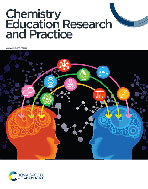Teaching stereoisomers through gesture, action, and mental imagery
Abstract
Many undergraduate chemistry students struggle to understand the concept of stereoisomers, molecules that have the same molecular formula and sequence of bonded atoms but are different in how their atoms are oriented in space. Our goal in this study is to improve stereoisomer instruction by getting participants actively involved in the lesson. Using a pretest–instruction–posttest design, we instructed participants to enact molecule rotation in three ways: (1) by imagining the molecules’ movements, (2) by physically moving models of the molecules, or (3) by gesturing the molecules’ movements. Because gender differences have been found in students’ performance in chemistry (Moss-Racusin et al., 2018), we also disaggregated our effects by gender and examined how men and women responded to each of our 3 types of instruction. Undergraduate students took a pretest on stereoisomers, were randomly assigned to one of the 3 types of instruction in stereoisomers, and then took a posttest. We found that, controlling for pretest performance, both women and men participants made robust improvements after instruction. We end with a discussion of how these findings might inform stereoisomer instruction.


 Please wait while we load your content...
Please wait while we load your content...
